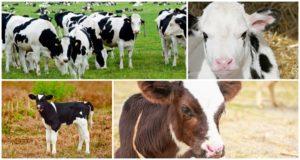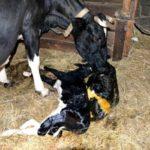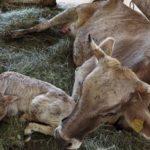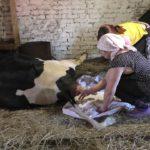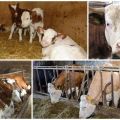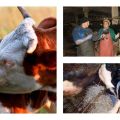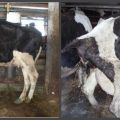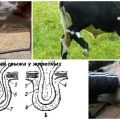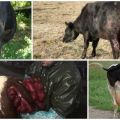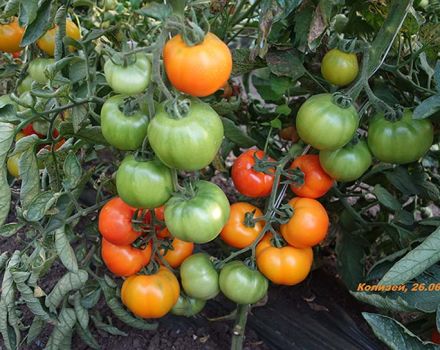How to prepare for the birth of a cow and adopt a calf, possible complications
In order to receive milk constantly, the cow needs periodic resumption of lactation. This happens after the birth of the calf. A livestock breeder must certainly understand how a cow gives birth. Although such a process is considered natural, it requires special supervision, the creation of appropriate conditions for the animal. It is also worth remembering: complications are possible not only during pregnancy, but also during the birth of a baby or after calving.
Preparing for childbirth
Preparatory work for the birth of a calf includes:
- Running a cow. In order to ensure the rest of the future woman in labor, the owner must gradually stop milking the animal.
- Diet change. On the eve of calving, the volume of food increases by 20%. Four days before the expected date, forage is removed from the diet. All that remains is high-quality hay and green grass (in small quantities). In no case should overfeeding be allowed.
- Purchase of required medicines, materials. You should prepare in advance: dense threads (for tying the umbilical cord), iodine, scissors (sharp, disinfected), waffle towels, gloves (disposable), laundry soap.
- Premises preparation. The floors and walls of the barn must be cleaned with a solution that contains chlorine. Then cover the soft hay, change it every day. The cow should be in a clean, spacious room already five days before the expected calving date.
Proper barn preparation will greatly reduce the likelihood of calving complications.
How is a calf born?
Calves are usually born naturally and then the cows take care of them themselves. If the fruit is large, it does not come out, then human help is required.
Natural birth
On the eve of a responsible day, it is important to show the cow to the veterinarian. But in the village it may not be. Therefore, every livestock breeder should know how to help the animal during childbirth, if necessary. In case of favorable circumstances, the owner only needs to accept the newborn, gently wipe it of mucus, and clear the nostrils. In addition, in order to facilitate prolonged labor, the fetal bladder can be cut with disinfected scissors.
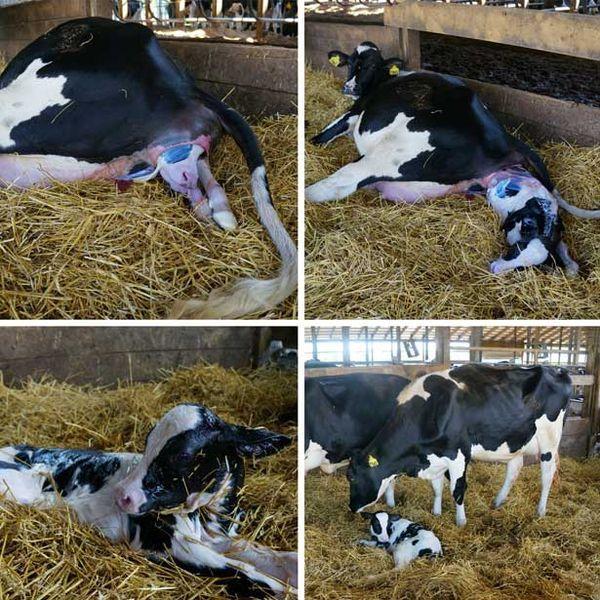
With human help
During childbirth, the intervention of the owner is necessary only in rare cases, when such complications arise:
- the baby does not come out for half an hour after opening the bladder;
- too weak attempts;
- exiting the calf with hind legs.
As a rule, difficulties arise when the animal gives birth for the first time. In such cases, it is best to call your veterinarian to help you take delivery.
You can't do without a veterinarian if you need a caesarean section. Surgical intervention is used if the fetus is very large (does not pass through the birth canal), if the cervix does not open properly.
You need to take a newborn on a clean burlap, under which you should put a layer of straw. The umbilical cord (if not broken) should be cut off with pre-processed scissors (distance - 10 cm from the abdomen), grease the end of the umbilical cord with iodine or brilliant green. After mucus is removed, the calf is allowed to lick.
Possible complications
Some time after calving, the following problems may occur:
- a weakened animal cannot stand up;
- delayed afterbirth;
- severe swelling of the udder;
- indigestion;
- there is no milk;
- significant reduction in cow weight.
In all cases, a veterinarian must be called. He will carefully examine the animal, make the correct diagnosis, and prescribe the necessary treatment.

Tips from experienced breeders
In order to properly prepare for calving, to avoid possible complications, beginners need to heed the following recommendations:
- For the cow, an individual calving calendar should be drawn up, which will take into account all its features.
- During the first pregnancy, the animal should not be released to pasture if there are any signs of impending birth.
- On the eve of the expected event, the cow should not be exposed to stress.
- A thorough daily examination of the cow will help to calculate the exact calving date.
- To determine the duration of the labor process, it is required to record the time of the onset of contractions.
- If a cow has a multiple pregnancy, then it requires constant supervision by an experienced veterinarian.
Calving with a cow is a natural phenomenon, for which it is better to prepare in advance. With proper preparation, the likelihood of any complications is minimized. The owner should not rely entirely on nature. In case of urgent need, the animal needs urgent help.
